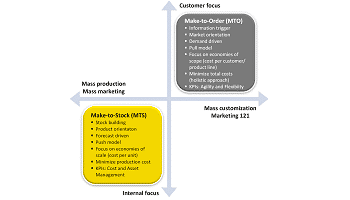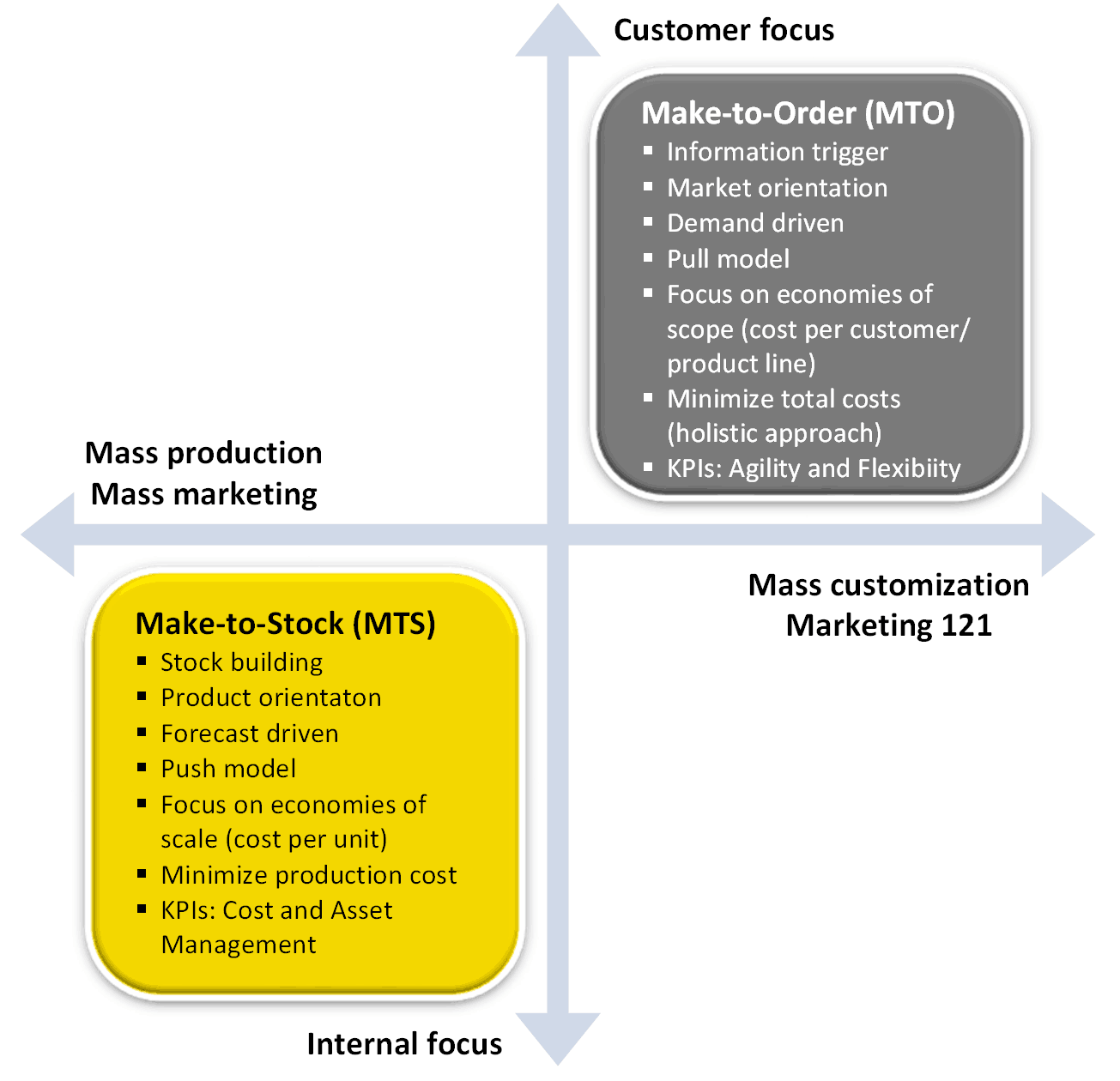- December 11, 2012
- Posted by: Javier González Montané
- Categories: Sales, Supply Chain

According to SCOR Reference Model there are three main supply chains or we could say three main supply chain strategies (make-to-stock, make-to-order, and engineer-to-order). As we are showing those strategies must be aligned with manufacturing and marketing/sales strategy.
Despite SCOR mention three strategies, we could say that in reality there are two main supply chains and/or manufacturing strategies because engineer-to-order could be considered as a sub-classification of make-to-order.
The two main supply chain and/or manufacturing strategies
- Make-to-stock (MTS): We manufacture and stock the goods. The goods are stocked until we receive sales for those products. The main advantage of this strategy is that allowing us to short delivery times to customers because finish goods are already produced (if our forecast is correct). On the other hand, we are building stock, and costs associated with stock (cost of capital, inventory damages, insurance of inventory, inventory obsolescence, and inventory shrinkage). Perhaps the main handicap of this strategy is that we need to forecast sales, and as it is well known to perform a good forecast is complex, and be 100% right with the forecast is “almost impossible”. The make-to-stock strategy fit very well with the traditional economies of scale approach because we can optimize production batches supporting extra production with finish goods warehouses.
- Make-to-order (MTO): We start manufacturing after receiving sales orders, and just covert the sales orders (we are not stocking). The main advantage is that finish goods stock is not built, so the cost associates with that stock are not going to flourish. On the other hand, delivery lead times are getting longer to compare with firm that stock product. However, this approach makes more agile and flexible to these firms, if we are talking about customized products. This make-to-order strategy fits with lean approaches well or even many customized products that are not able to be planned.
Now we are showing an image that shows and summarizes the relation between supply chain, manufacturing and marketing/sales strategies. We should not forget that any functional strategy not well aligned with the rest of the functional strategies could be created an inconsistent business model that could make fail the firm in the market.
Supply Chain and Manufacturing Strategies: Aligning functional strategies (adapted from Martin Christopher)

The two other supply chains and manufacturing strategies related to make-to-order
- Engineer-to order: Customers’ orders will require of engineering specific designs. So inventory “cannot be built” until the sales order is not received, and the design needs are known.
- Assemble-to-order: Compare with make-to-order the difference is that rather than make we assemble.
The utility of this framework for turnaround processes
- Reviewing if there is any inconsistent in the main functional strategies, because those inconsistencies could be one of the causes of current business issues.
- Make-to-order strategy could be a lean solution to optimize total costs rather than silos costs.
- Make-to-order strategy could be a new approach to revitalize company strategy.
- Rethinking about our core competencies.

